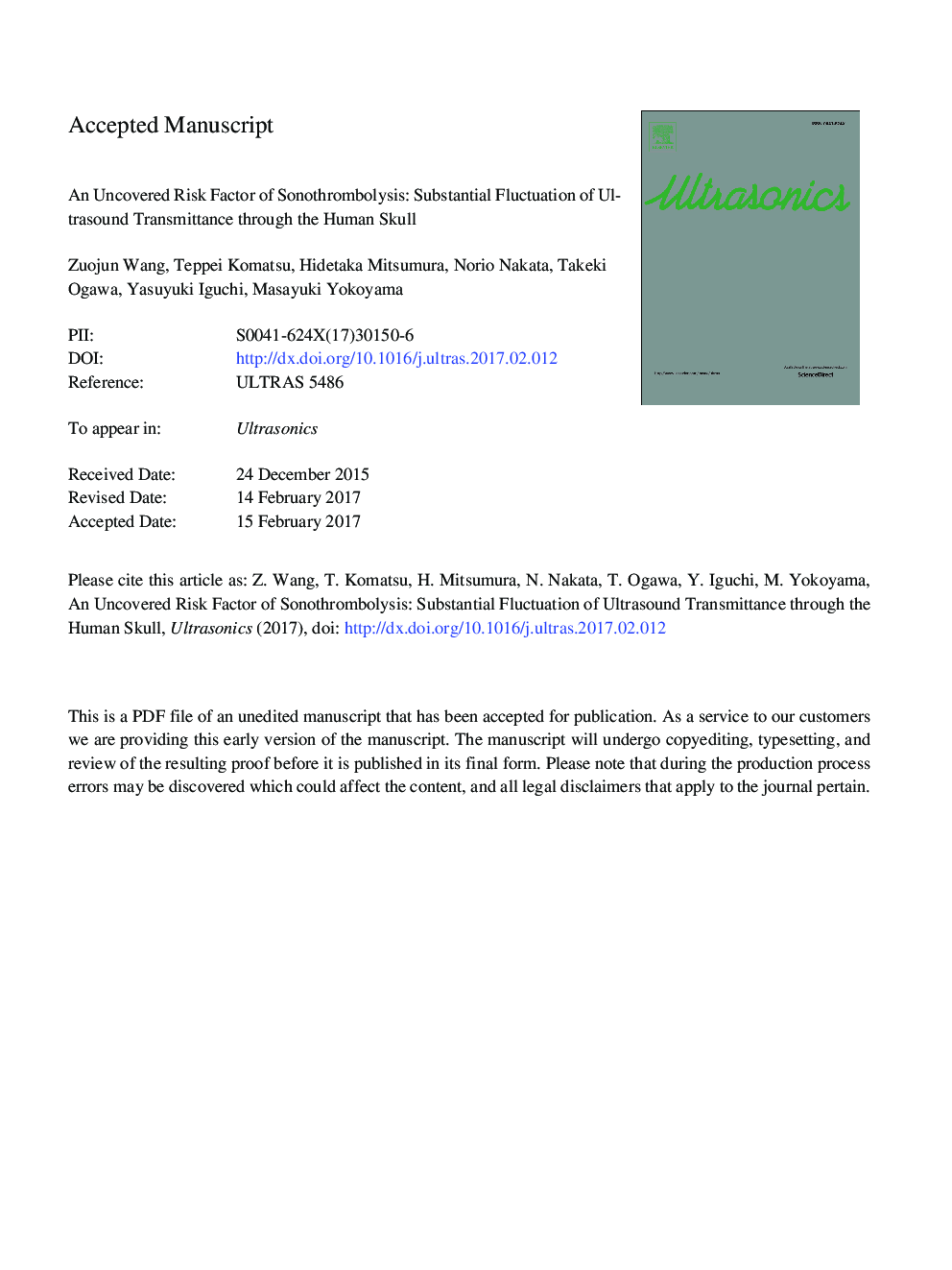| Article ID | Journal | Published Year | Pages | File Type |
|---|---|---|---|---|
| 5485344 | Ultrasonics | 2017 | 43 Pages |
Abstract
Sonothrombolysis is one of the most feasible methods for enhancing clot lysis with a recombinant tissue plasminogen activator (rt-PA) in cases of acute ischemic strokes. For safe and efficient clinical practices of sonothrombolysis, accurate estimation of ultrasound transmittance through the human skull is critical. Previously, we reported substantial and periodic fluctuation of ultrasound transmittance through a bone-phantom plate following changes to ultrasound frequency, the thickness of the bone-phantom plate, and the distance between a transducer and the bone-phantom plate. In the present study, we clarify the transmittance behavior of medium-frequency ultrasound (from 400Â kHz to 600Â kHz) through the human skull, and examine reduction of the transmittance fluctuation. For the study, we measured transmittance of sinusoidal ultrasound waves at 400Â kHz, 500Â kHz, and 600Â kHz at 13 temple spots on 3 human skulls by changing the distance between a transducer and the skull bone, and found substantial and periodic fluctuation in the transmittance behaviors for these sinusoidal voltage excitations. Degrees of the fluctuation varied depending on the measurement spots. A fluctuation ratio between the maximum transmittance and the minimum transmittance reached 3 in some spots. This large transmittance fluctuation is considered to be a risk factor for sonothrombolysis therapies. We examined a modulated ultrasound wave to reduce the fluctuation, and succeeded in obtaining considerable reduction. The average fluctuation ratios for 400-kHz, 500-kHz, and 600-kHz waves were 2.38, 2.38, and 2.07, respectively. We successfully reduced the ratio to 1.72 by using a periodic selection of random frequency (PSRF)-type of modulation wave. The thus obtained results indicate that attention to the fluctuation in ultrasound transmittance through the skull is necessary for safe and effective sonothrombolysis therapies, and that modulated ultrasound waves constitute a powerful method for reducing the risk of fluctuation.
Related Topics
Physical Sciences and Engineering
Physics and Astronomy
Acoustics and Ultrasonics
Authors
Zuojun Wang, Teppei Komatsu, Hidetaka Mitsumura, Norio Nakata, Takeki Ogawa, Yasuyuki Iguchi, Masayuki Yokoyama,
